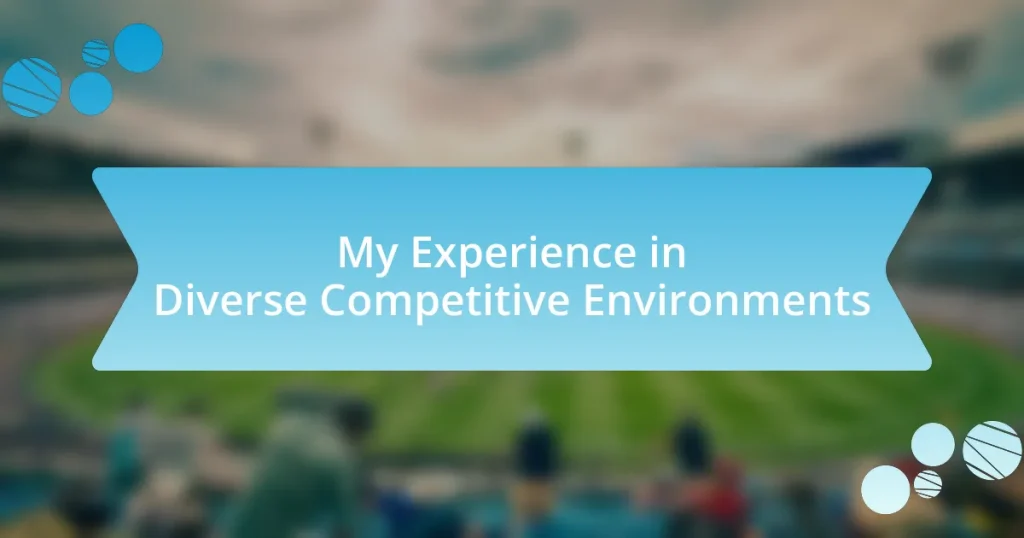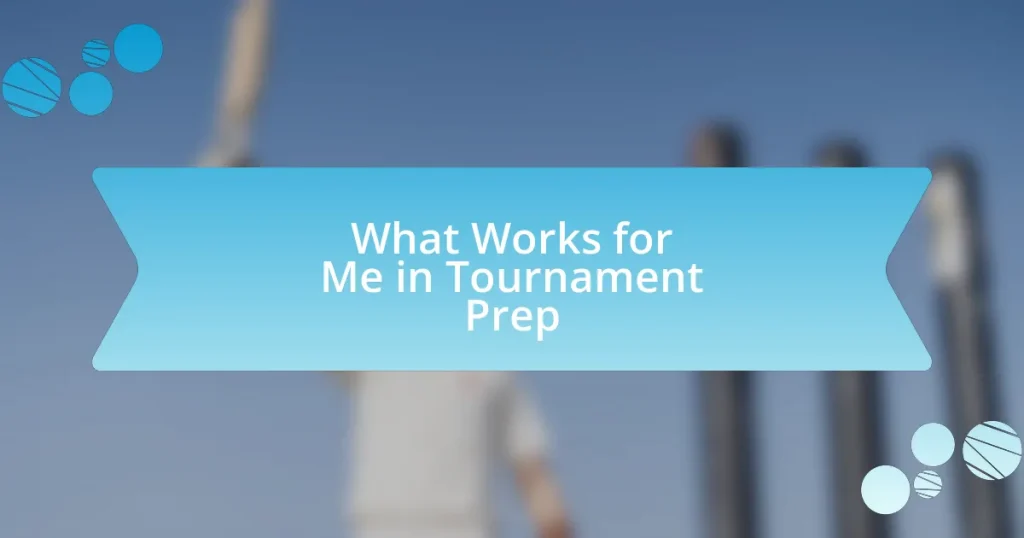Key takeaways:
- Healthy competition can enhance performance and foster collaboration, leading to personal and professional growth.
- Diverse experiences promote innovative problem-solving and strengthen team dynamics through enriching perspectives.
- Building resilience through setbacks is essential for personal development and can be supported by a network of resilient peers.
- Networking transforms competitive interactions into collaborative opportunities, emphasizing the value of authentic connections.
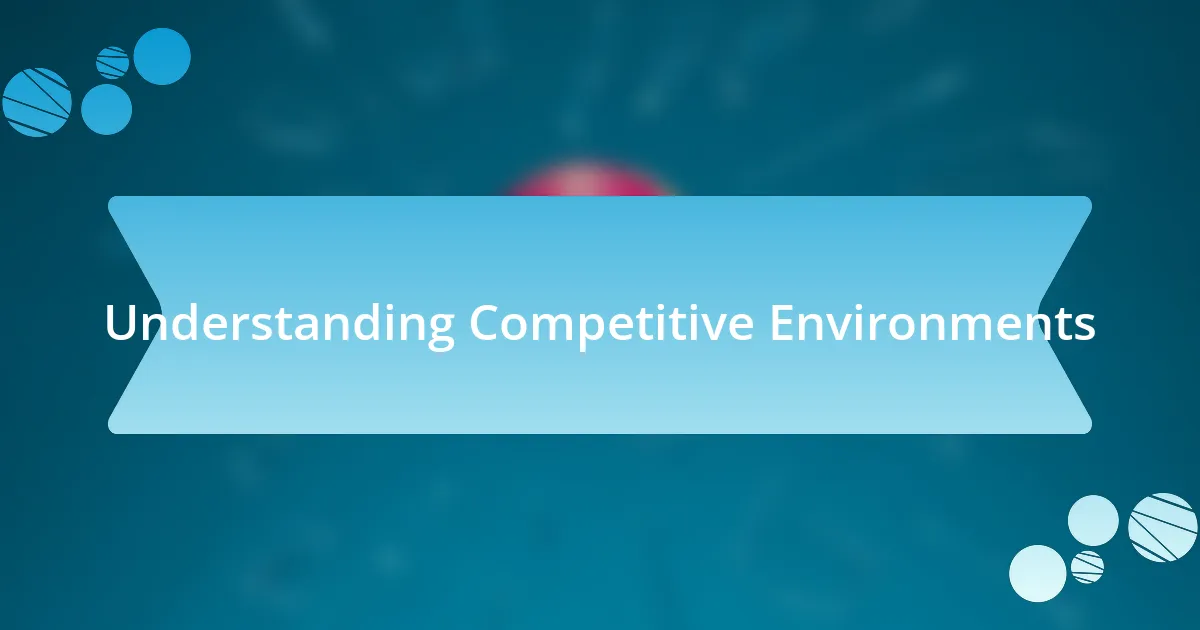
Understanding Competitive Environments
In my experience, competitive environments are often shaped by a mix of intense ambition and collaboration among peers. I recall a time in college during a group project where each member brought their A-game, pushing each other to excel. This high-energy dynamic not only fostered creativity but also made me question: How does healthy competition help us evolve?
I’ve learned that understanding competitive environments involves recognizing both the drive to outperform and the importance of support. For instance, when I entered a high-stakes sales competition, I discovered that sharing strategies with my colleagues not only enhanced our individual performances but also built lasting networks. It was a revelation that competition doesn’t always have to tear us apart; it can unite us in our quest for excellence.
Moreover, the emotional rollercoaster of competing can be incredibly enlightening. I remember moments when I faced setbacks during competitions, feeling discouraged and questioning every choice I made. Yet, those difficult times taught me resilience and how vital it is to embrace both victories and failures. Isn’t it fascinating how our toughest challenges often lead to the most profound personal growth?
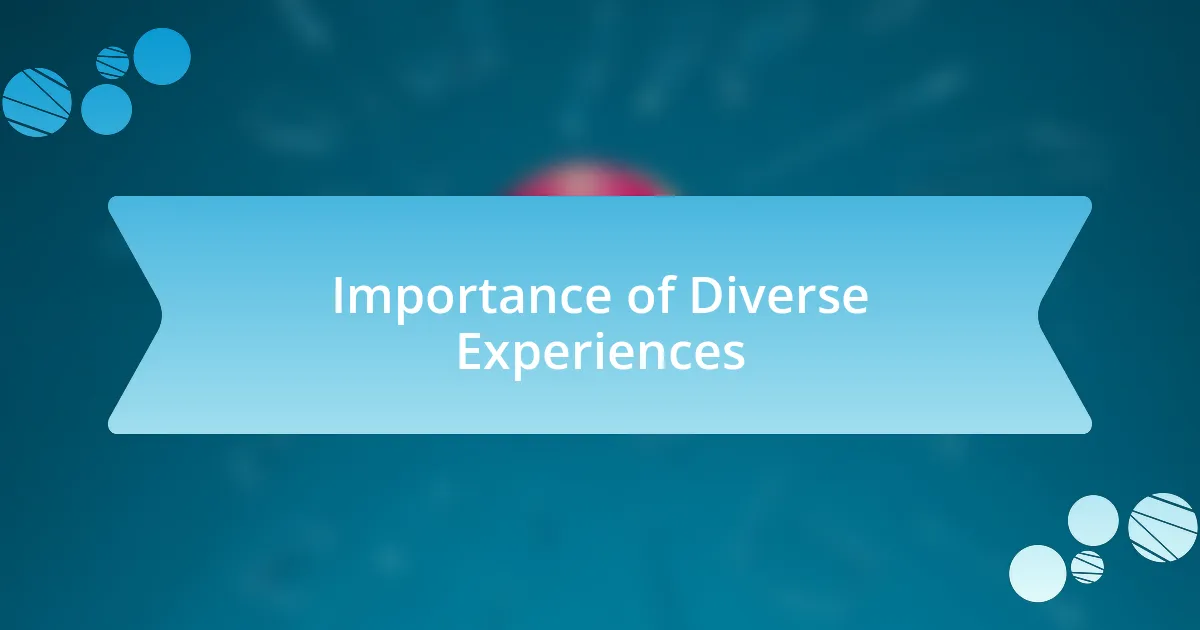
Importance of Diverse Experiences
Diverse experiences play a crucial role in developing comprehensive problem-solving skills. I remember attending a workshop with participants from various fields—art, technology, and science—which challenged me to adapt my thinking. This exposure not only broadened my perspective but also enhanced my ability to approach issues creatively, showcasing how diversity fosters innovative solutions.
Navigating competitive environments with diverse backgrounds and insights can lead to more effective teamwork. For example, during a product development project, our team combined viewpoints from different disciplines, leading to breakthroughs we would have never achieved alone. This diversity not only enriched our project but also reinforced the idea that collaboration, fueled by varied experiences, can transform challenges into opportunities.
Engaging with individuals from diverse backgrounds also cultivates empathy and cultural awareness, essential attributes in today’s world. I recall working with a team that included members from different countries, where sharing personal stories helped us understand each other’s motivations and struggles. This experience reminded me that our differences can create deeper connections and drive us toward common goals—an invaluable lesson in both competitive and cooperative contexts.
| Aspect | Diverse Experiences |
|---|---|
| Skill Development | Enhances problem-solving and innovation |
| Team Dynamics | Strengthens collaboration and creativity |
| Empathy & Awareness | Cultivates deeper cultural understanding |
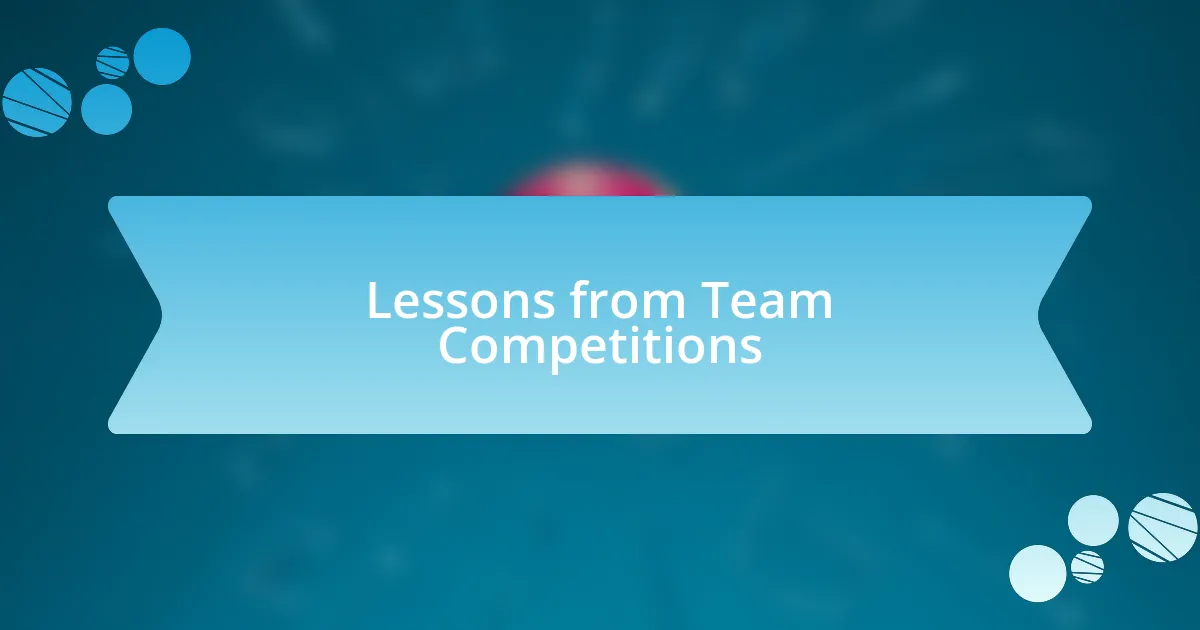
Lessons from Team Competitions
Lessons from team competitions are deeply rooted in the collaborative energy that emerges when diverse minds come together. I vividly recall a team competition where we were composed of individuals from various academic backgrounds: some were engineers, while others were marketing students. As we tackled challenges, I found that the engineers were great at technical problem-solving, but it was the marketers who helped us frame our ideas in ways that resonated with the audience. This dynamic taught me that blending different expertise not only enhances our strategies but also ignites creativity, leading to innovative solutions that none of us would have arrived at independently.
Through these competitions, I learned the importance of clear communication, trust, and adaptability. Each of these elements became critical as we navigated obstacles together. Consider these key takeaways:
- Communication: Open dialogue is crucial for aligning diverse perspectives.
- Trust: Building trust fosters a safe space for idea sharing.
- Adaptability: Flexibility in roles enhances team cohesion and response to unexpected challenges.
- Collaboration: Valuing each member’s unique contributions leads to richer outcomes.
- Reflection: Post-competition discussions allow for lessons learned to be shared and integrated into future endeavors.
These experiences truly illustrate how teamwork in diverse settings can yield exceptional insights and outcomes.
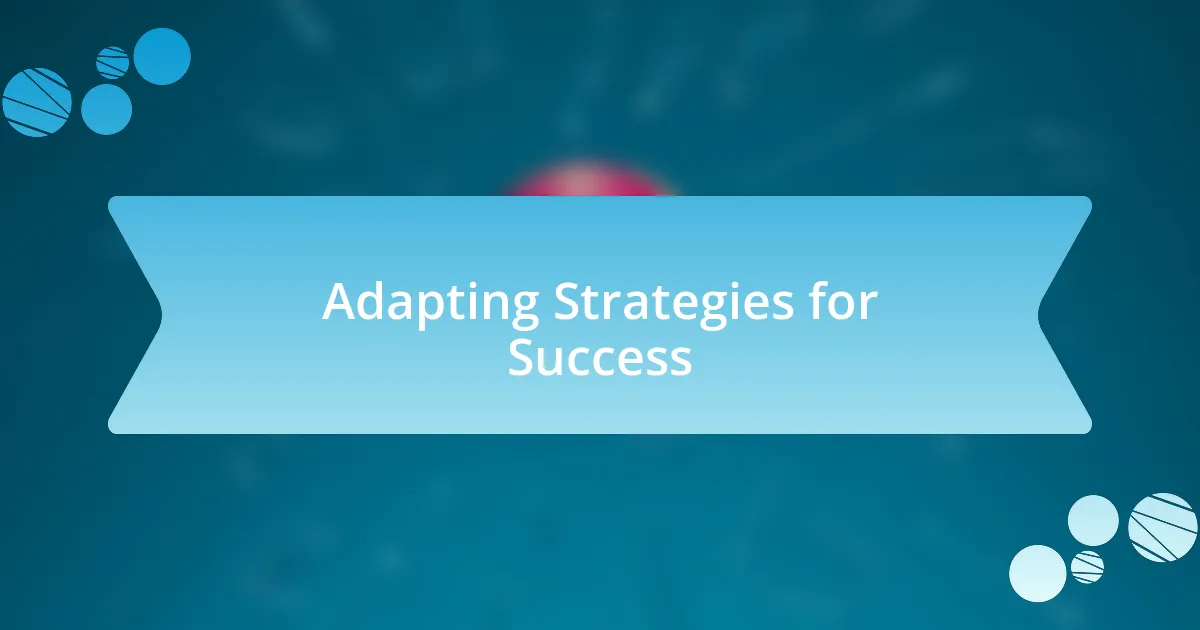
Adapting Strategies for Success
In the fast-paced world of competitions, I quickly learned that adjusting my strategies could be the key to success. For instance, I recall a situation where our team faced unexpected setbacks due to technical failures. Instead of sticking stubbornly to our original plan, we held an impromptu brainstorming session that allowed everyone to voice their thoughts. It was exhilarating to see how shifting our focus led to innovative approaches that salvaged our project.
As I navigated these competitive environments, I discovered that being open to evolving my plans was just as important as the initial strategy itself. Initially, I felt some anxiety over changing course mid-competition. But embracing that discomfort taught me a valuable lesson: sometimes, the best ideas emerge when we dare to pivot and try something new. Have you ever found yourself stuck in a rigid mindset, only to later realize that a different approach could have opened up new opportunities?
Engaging with diverse teams, I often found that each person’s unique experiences were like puzzle pieces that contributed to our overall success. During one particular competition, I noticed how a teammate’s background in cultural studies provided fresh perspectives on problem-solving. As we navigated through challenges, I learned to appreciate the diverse insights others brought to the table. It wasn’t just about winning; it was about harnessing the collective strengths of our team, which truly enriched my approach to strategy.
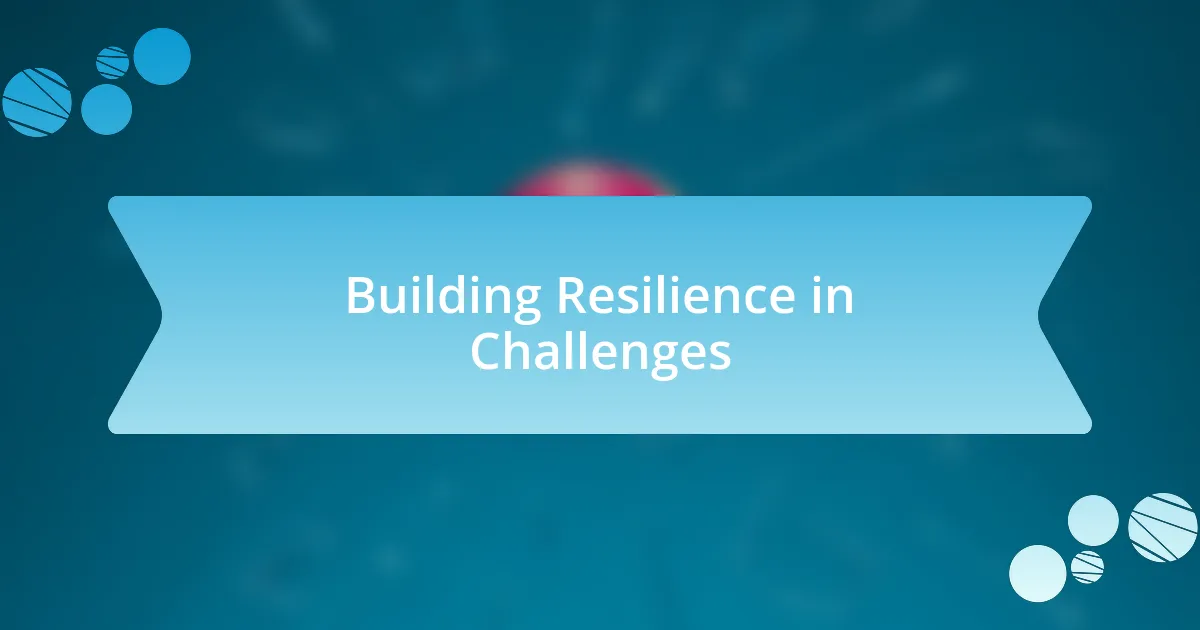
Building Resilience in Challenges
Building resilience in challenges often means confronting obstacles head-on and learning from them. I remember a particular competition where our goal felt almost out of reach after a major setback. Instead of giving in to frustration, I decided to reframe my perspective. I asked myself, “What can I learn from this experience?” This simple shift not only helped me stay calm but also encouraged my teammates to see setbacks as opportunities for growth.
There was another time when a tough loss hit me hard, and I felt overwhelmed by doubt. It was a pivotal moment; I sat down with my thoughts and realized that resilience isn’t about never failing—it’s about how we respond to those failures. I started journaling my experiences, which helped me track my progress and build emotional strength over time. This habit transformed my ability to bounce back; I began to view challenges as stepping stones rather than stumbling blocks.
In competitive environments, I often discover that surrounding myself with resilient individuals makes a significant difference. Their attitude can be infectious, pushing me to adopt a similar mindset. Have you ever noticed how the energy of those around you can uplift or drain your spirit? Engaging with resilient peers not only boosts my own resilience but also reinforces the idea that we can support each other through adversity. It’s in facing challenges together that we truly grow stronger.
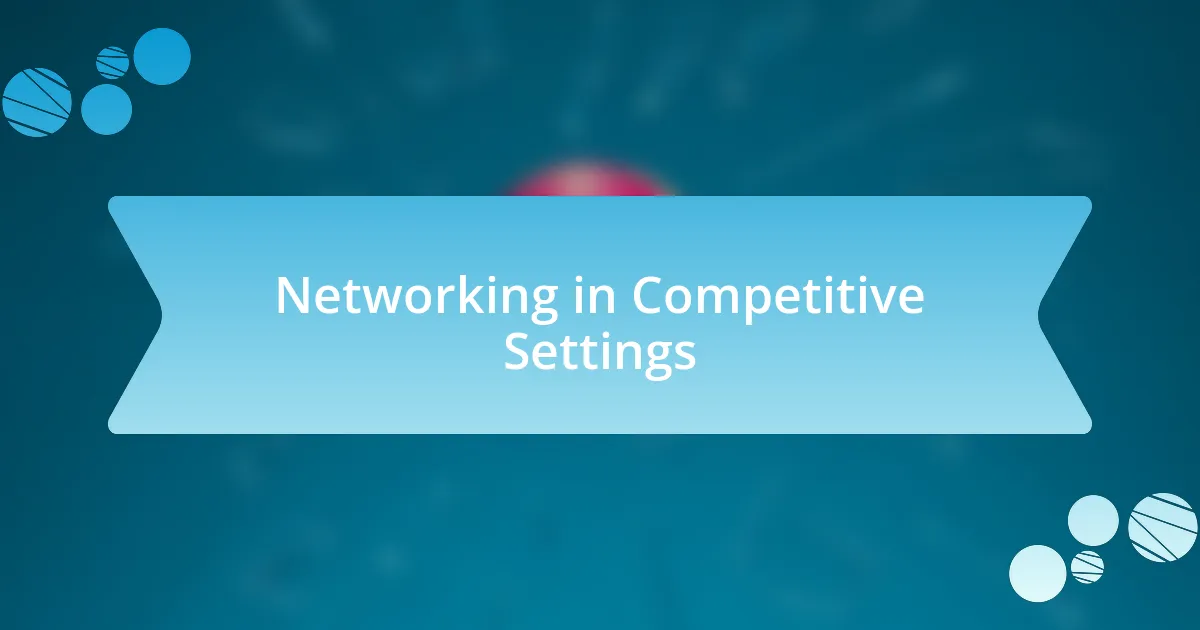
Networking in Competitive Settings
In competitive settings, networking can feel intimidating, yet it’s a crucial skill I’ve learned to embrace. I remember attending a high-stakes conference where everyone seemed to be on edge, competing for the same opportunities. Instead of viewing my peers as rivals, I saw them as potential allies. I approached a few individuals, shared experiences, and discovered mutual interests. This shift in mindset turned a nerve-wracking event into a valuable space for collaboration.
Building relationships in these environments often requires a leap of faith. On one occasion, I struck up a conversation with someone I believed was my biggest competitor. To my surprise, we uncovered common challenges we faced in our fields. I realized that by sharing our journeys, we could lift each other rather than be dragged down by competition. Isn’t it fascinating how conversations can bridge perceived divides, transforming competitors into collaborators?
I’ve also found that attending informal networking events opens doors to unexpected connections. At one such gathering, I met someone who had completely different experiences yet offered fresh perspectives that transformed my approach to competition. I remember feeling hesitant, but I asked a few genuine questions about their journey. Suddenly, what felt like a competitive atmosphere morphed into a space for idea exchange. Engaging authentically has become a key part of my networking strategy, and it makes navigating competitive spaces much more enjoyable, don’t you think?
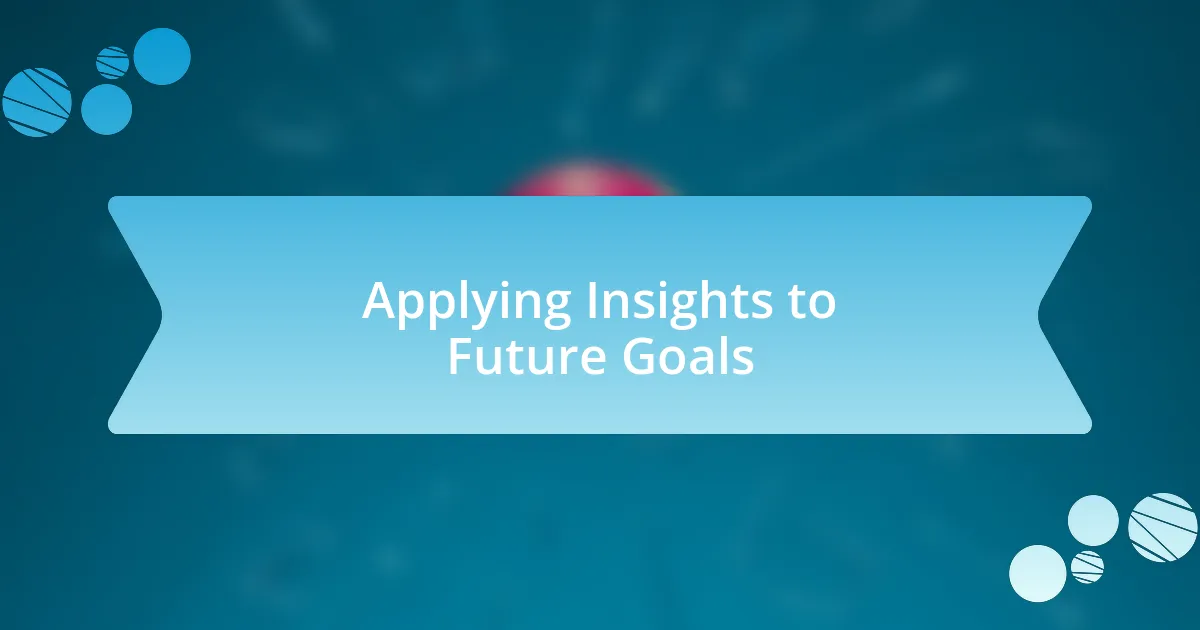
Applying Insights to Future Goals
Once I’ve navigated the complexities of competitive environments, I find it essential to apply those insights to my future goals. For instance, after a particularly intense project, I realized the value of collaboration over competition. I set a goal to reach out to at least one new connection each month, knowing that each relationship could lead to unexpected opportunities and knowledge.
I’ve started to leverage what I’ve learned not just to solidify my position but to help others grow as well. In one instance, after a grueling team challenge, I offered to mentor a newcomer. This not only reinforced my understanding of the material but also ignited a passion in me to foster growth in others. It’s incredible how teaching can deepen your own insights while shaping the futures of those around you.
As I plan my next steps, I constantly reflect on my experiences. I ask myself, “What did I learn from that high-pressure situation?” This leads me to develop a more resilient mindset, shaping my future goals with a focus on collaboration and shared success. How can I use my insights to create an environment where everyone can thrive? In my experience, the answers often lie in prioritizing relationships over rivalry, ultimately paving the way for a more fulfilling journey ahead.










